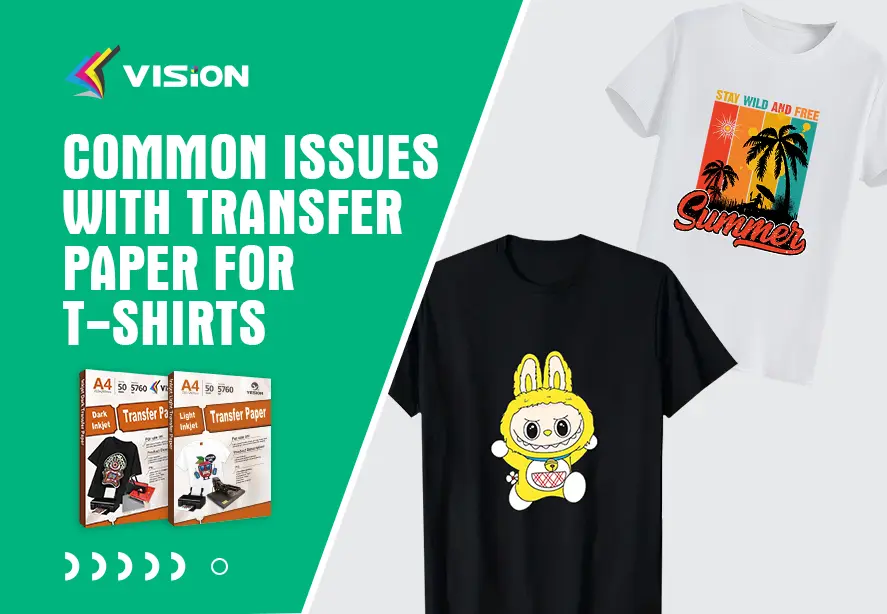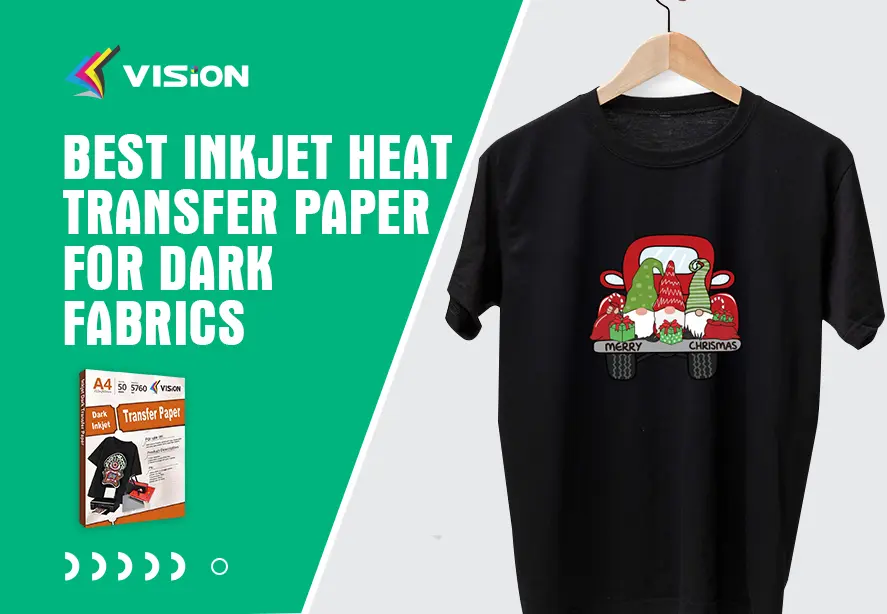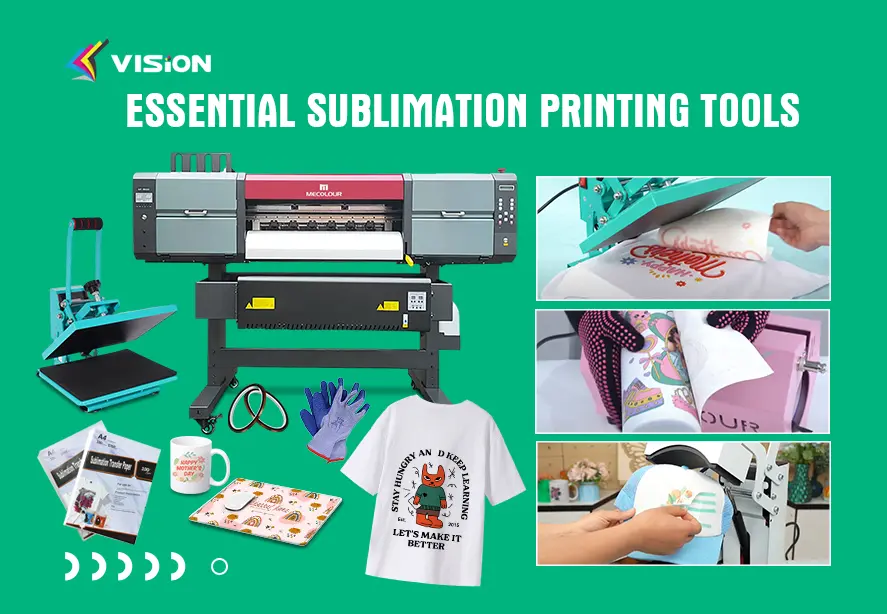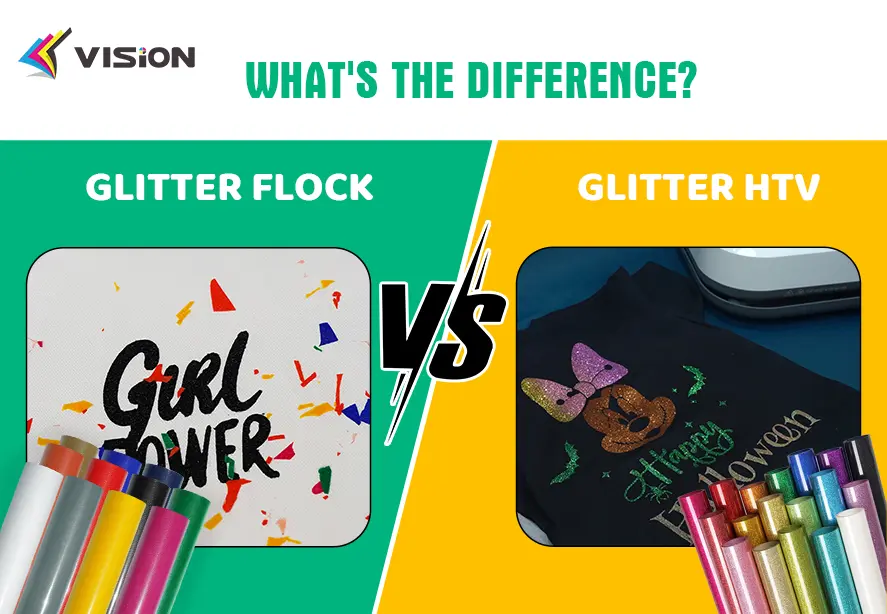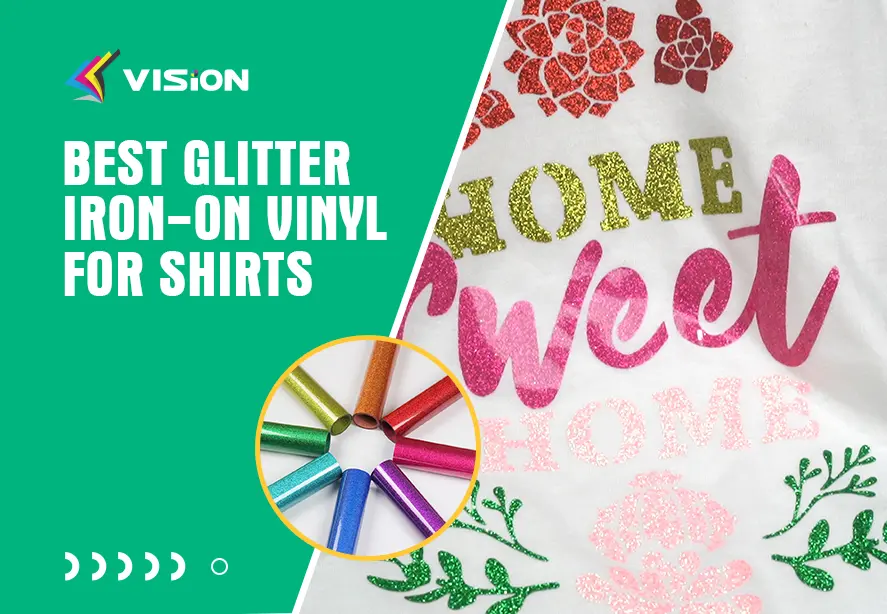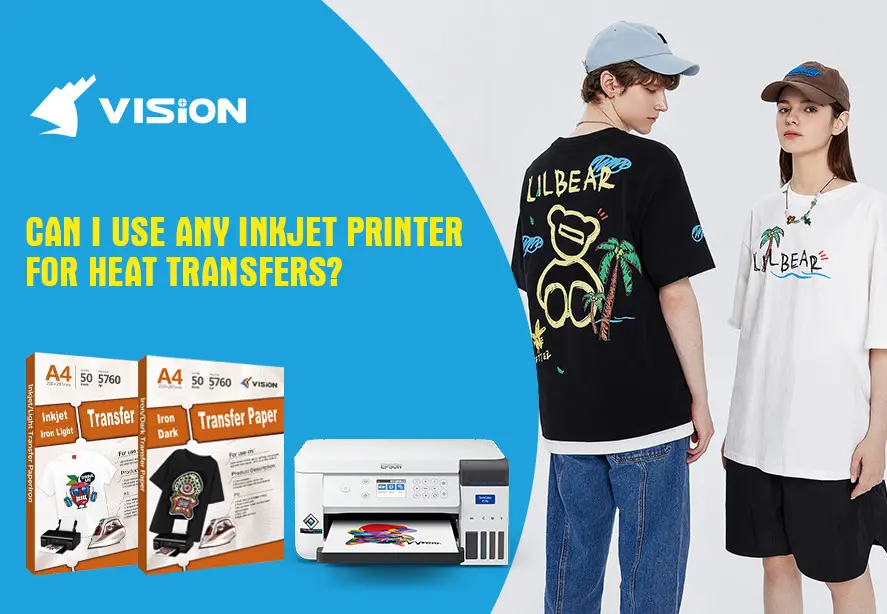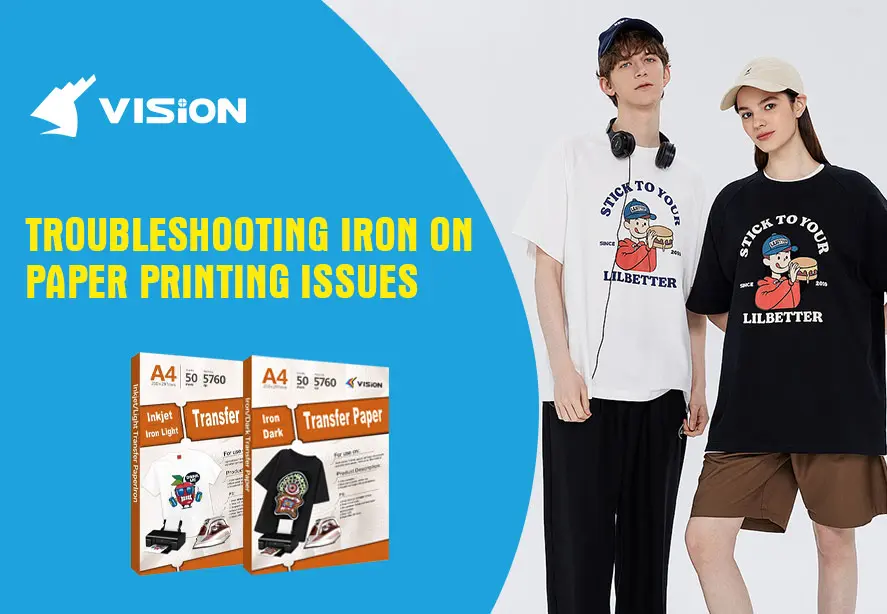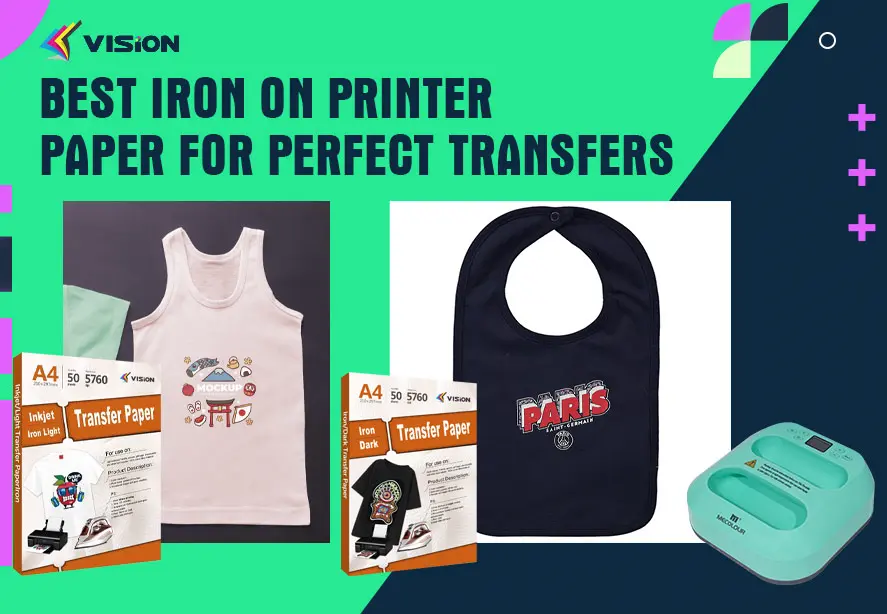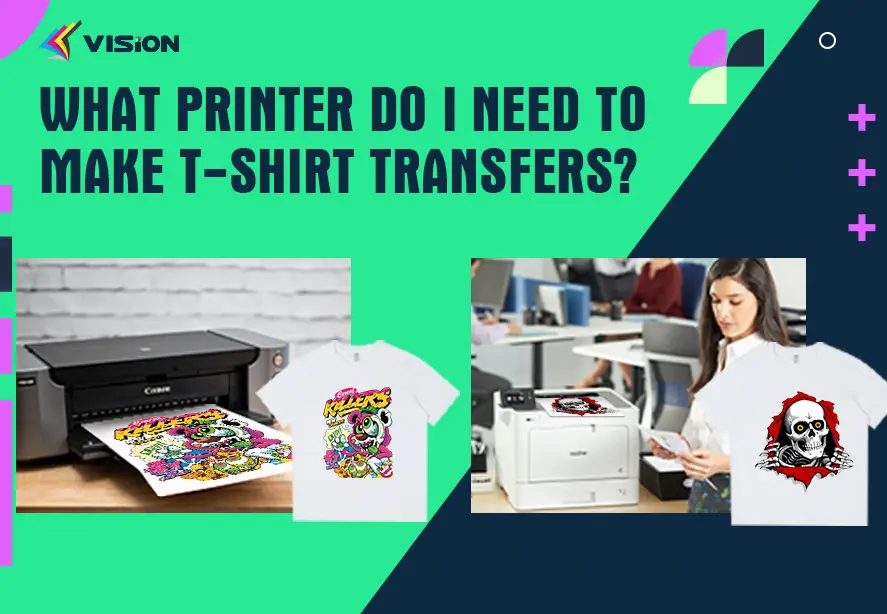Inkjet vs. Laser for Dark Fabric Transfer Paper
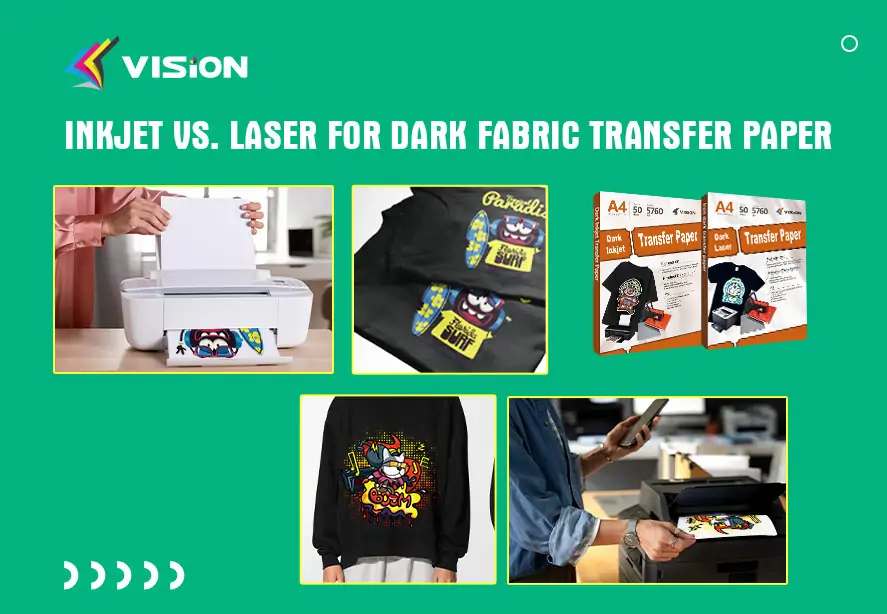
Transferring designs onto dark fabric can be a creative and exciting way to customize clothing, accessories, and other textile items. When it comes to dark fabric transfer paper, choosing the right printing technology is essential to achieve high-quality results. Inkjet and laser printers are the two primary options available for dark fabric transfers. In this article, we will explore the differences between inkjet and laser technology for dark fabric transfers. By understanding these differences, you will be able to make an informed decision and select the ideal printing technique for your specific needs.
Inkjet Printing for Dark Fabric Transfer Paper
How Inkjet Printing Works
Inkjet printing technology uses tiny droplets of ink that are sprayed onto the inkjet transfer paper. The ink is absorbed by the paper, creating a vibrant and detailed image. Inkjet printers are commonly used for home and small-scale printing projects.
Advantages of Inkjet Printing
Inkjet printing offers several advantages for dark fabric transfers:
Color Accuracy: Inkjet printers excel at reproducing vibrant colors and intricate details, making them a popular choice for dark fabric transfers. The wide color gamut allows for accurate color reproduction, ensuring that your designs come out as intended.
Cost-Effective: Inkjet printers are generally more affordable compared to laser printers, making them a budget-friendly option for individuals and small businesses looking to create custom designs on dark fabric.
Flexibility: Inkjet printers can handle a wide variety of media, including different types of transfer papers. This versatility allows you to experiment with different textures and finishes, giving you more options for your designs.
VISION inkjet dark transfer paper for dark cotton tshirt
Limitations of Inkjet Printing
While inkjet printing is a popular choice for dark fabric transfers, it does have some limitations to consider:
Durability: Inkjet prints may not be as durable as laser prints, especially when exposed to frequent washing or harsh conditions. The ink can fade or bleed over time, which can affect the longevity of your designs. To enhance durability, additional steps such as heat pressing or using fabric protectors may be needed.
Print Speed: Inkjet printers are typically slower than laser printers, which may be a consideration if you have large or time-sensitive printing projects. It’s important to factor in the time required for printing when planning your production schedule.
Laser Printing for Dark Fabric Transfer Paper
How Laser Printing Works
Laser printing technology uses a laser beam to create an electrostatic image on a drum or belt. Toner, a powdered ink, is then applied to the image and transferred onto the laser transfer paper using heat and pressure. Laser printers are commonly found in office settings and are known for their speed and precision.
Advantages of Laser Printing
Laser printing offers several advantages for dark fabric transfers:
Durability: Laser prints are generally more durable than inkjet prints, making them suitable for designs that require frequent washing or exposure to harsh conditions. The toner used in laser printing is heat-set onto the fabric, creating a strong bond that resists fading and cracking.
Speed: Laser printers are known for their fast printing speeds, making them a preferred choice for high-volume printing projects. If you have a large number of dark fabric transfers to produce, laser printing can significantly reduce production time.
Sharpness: Laser prints offer sharp and crisp images, making them ideal for designs with fine details or small text. The precision of laser printing ensures that your designs will be accurately reproduced on the fabric.
How to use vision laser dark heat transfer paper for cotton tshirt?
Limitations of Laser Printing
While laser printing has its advantages, there are also some limitations to consider:
Color Vibrancy: While laser printers can produce vibrant colors, they may not match the level of vibrancy achieved by inkjet printers. This may be a consideration for designs that rely heavily on vivid colors. However, advancements in laser printing technology have improved color reproduction, narrowing the gap between inkjet and laser in this aspect.
Cost: Laser printers tend to be more expensive compared to inkjet printers, especially for high-quality color models. The initial investment and ongoing maintenance costs should be taken into account when considering laser printing for dark fabric transfers.
Choosing the Right Technology for Dark Fabric Transfer Paper
When deciding between inkjet and laser printing for dark fabric transfers, there are a few factors to consider:
Color Accuracy and Vibrancy: If achieving vibrant and accurate colors is crucial for your designs, inkjet printing may be the better choice. Inkjet printers excel at reproducing a wide range of colors and intricate details.
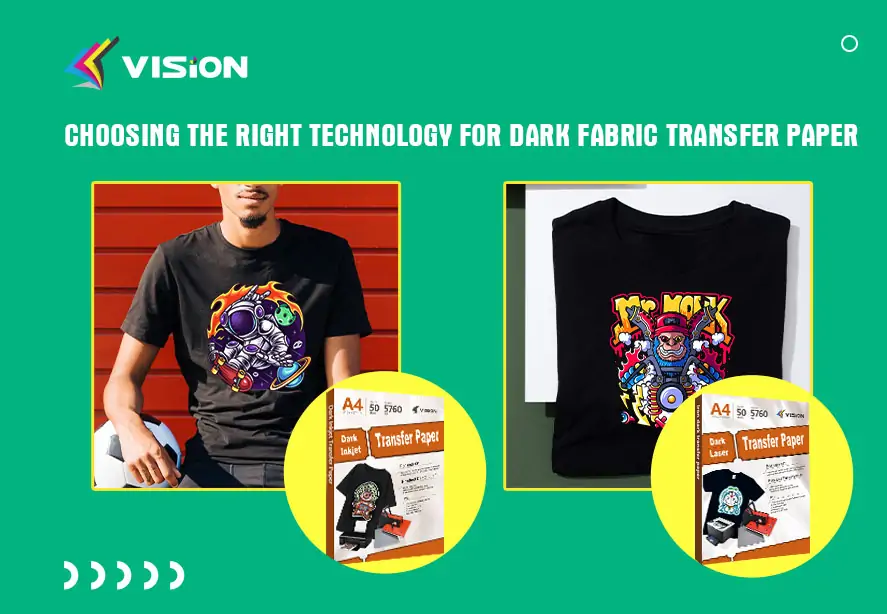
Choosing the Right Technology for Dark Fabric Transfer Paper
Durability: If durability is a top priority for your designs, laser printing is recommended. Laser prints are more resistant to fading and cracking, making them suitable for items that will undergo frequent washing or harsh conditions.
Printing Speed: If you have large or time-sensitive printing projects, laser printing’s fast printing speed can be advantageous. However, if you have smaller-scale projects and can accommodate longer printing times, inkjet printing can still yield excellent resultswhile being more cost-effective.
Budget: Consider your budget when deciding between inkjet and laser printing. Inkjet printers are generally more affordable, making them a suitable choice for individuals or small businesses with a limited budget. Laser printers, on the other hand, may have a higher upfront cost but can offer long-term cost savings if you have a high volume of printing needs.
Design Complexity: If your designs have fine details or small text, laser printing’s sharpness and precision may be better suited for your needs. Inkjet printing can also produce detailed designs, but laser prints can offer a higher level of clarity.
In summary, both inkjet and laser printing technologies have their advantages and limitations for dark fabric transfers. Inkjet printing is known for its color accuracy and affordability, while laser printing offers durability and faster printing speeds. Consider your specific requirements, such as color vibrancy, durability, speed, budget, and design complexity when choosing the right technology for your dark fabric transfer paper projects. By carefully considering these factors, you can select the printing technique that will best meet your needs and help you achieve high-quality results.


